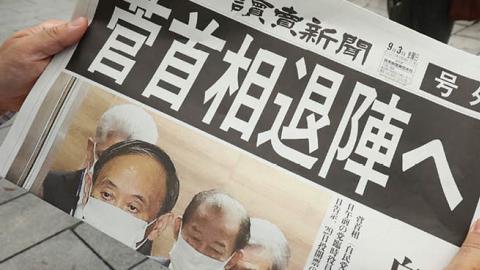Japan is headed into a consequential election season. On September 29th, the ruling political party, the Liberal Democratic Party (LDP), will determine within its own ranks who will be their next president and effectively the next prime minister of Japan following the current Prime Minister Yoshihide Suga’s announcement he will not seek re-election as LDP leader. After which Japan’s parliament, the National Diet, will officially choose Japan’s next prime minister on October 4th. This then sets the stage for the election for Japan’s House of Representatives on October 17th—the first lower house election since 2017.
What can we expect to see as we head into these electoral contests? Japan continues to struggle with the impact of COVID-19, the measures put in place to limit the spread of the virus, and the effects these have had on Japan’s society and economy. Criticism of the Suga government’s handling of the pandemic could mean that the LDP loses seats in the lower house in this election. It’s why the LDP will likely put forward a new leader with high public support in the hopes of mitigating its losses in the lower house. It’s unlikely that the LDP and its partner, the Komeito Party, will lose its majority though.
With a new prime minister comes new policy initiatives. Whoever takes charge of the country will likely put economic recovery and national defense at the front of their agenda. While there may be shifts in the cabinet and lower house, this will affect Japan’s internal bureaucracy more than anything else. Still, the next government of Japan is unlikely to be as short-lived as the Suga government and it’ll be important for U.S. and foreign officials to quickly engage with Japan’s new leadership to ensure a smooth transition.
A Cautionary Tale for the LDP
In its own way, Japan has a relatively stable political system. Of the 30 prime ministers to serve in office since Japan adopted its post-WWII constitution in 1947, 23 (about 80 percent) have been members of the LDP. The rest of Japan’s political system is made up of smaller parties, with many of the LDP’s competitors constantly rebranding. By a rough comparison, of the 14 U.S. presidents to serve over this same period, their memberships between either the Democratic or Republican parties has been split 50-50.
For Japanese politicians, this kind of continuity can be both a blessing and a curse. Even if voters lose faith in a specific administration, the ruling party may still count on their support in the next election. But as in all politics, the success of the next candidate often depends on the state of Japan’s economy, security, and overall prosperity. And historically speaking, the LDP hasn’t done well after times of economic downturn.
The only two periods in the last 70 years that the LDP lost control of the prime minister’s office followed significant economic shocks. The first loss came after the pop of Japan’s asset bubble in 1991, marking the end of the era of high economic growth in Japan, and the second followed the 2008 global financial crisis. Like most other countries, the COVID-19 pandemic took a significant toll on Japan’s economy in 2020.
Thankfully, the economic costs last year were short-lived compared to past recessions. But Japan is still struggling to manage its COVID-19 measures as the country fights to shake off its fourth wave of outbreak, which has reflected poorly on the Yoshihide Suga.
The Suga Government: A Bookmark for New Leadership
Why did the Suga government fall so far, so fast? Suga took over late last year after the former prime minister Shinzo Abe stepped down due to complications with his health. Despite the difficult circumstances under which he took reins of power, it initially seemed like Suga would do well: According to one poll taken right after entering office, his Cabinet had a strong approval rating of 74 percent.
Many were expecting the Suga government to get some boost in popularity following Japan’s hosting of the Summer Olympic games. This was the first time Japan hosted the games since 1964, and the country ended up winning more gold medals than any time before. Even though one-third of the population wanted the games to be postponed and another third wanted the games cancelled due to the ongoing pandemic, a majority now think it was good that Japan hosted the games.
Yet no number of Olympic medals could erase the criticism Suga’s administration received for its poor handling of the pandemic. Some polls now have his approval as low as 28 percent—one of the lowest approval ratings for a prime minister in nine years. Japan was one of the slowest countries to start mass-distributing vaccinations, though the country is now distributing vaccines at a blazing pace, and may become one of the few countries that is fully vaccinated by the end of the year as long as there aren’t any more problems with vaccines. But this progress was too little, too late to save Suga—especially as several prefectures in Japan recently extended their state of emergency.
What to Expect
Fumio Kishida, the former Minister of Foreign Affairs, was one of the first major players to announce his candidacy for LDP president. Kishida, and former Minister of Defense Shigeru Ishiba, both ran and lost against Suga in the LDP election last year so it’s only natural he’d try again. Ishiba, on the other hand, said he won’t run this time. Sanae Takaichi, former Minister of Internal Affairs and Communications, has also announced her intent to run and whose victory would be historic given Japan has never had a female prime minister.
However, voters only see a few lawmakers as potential contenders against Suga, and neither Kishida nor Takaichi is one of them: According to recent polls, most think it should be either Ishiba or Taro Kono. Kono has served as both the Minister of Foreign Affairs and Minister of Defense before. And despite also overseeing Japan’s COVID vaccine distribution during the Suga government, he’s maintained a relatively strong popularity. Kono announced his intent to run for LDP leadership just recently.
Kono’s close relationship with Suga and Taro Aso, the deputy prime minister, and strong public support, make him the most likely to be the LDP’s next president and Japan’s next prime minister. His connection with Suga also means it’s unlikely there will be much change in Japan’s policy reforms. It’s only natural that the next prime minister will focus on getting Japan’s economy up and running. The security of Japan, and countries in the region like Taiwan, has become an increasingly regular topic of Japanese leaders as well given Beijing’s growing belligerence in the Asia-Pacific. Climate change is also a growing concern, as highlighted in a recent U.S.-Japan Joint Statement. Kono has already mentioned he’d like to reform Japan’s tax code, pension system, and health insurance system. He’d also like to engage more with the U.S. and Taiwan on economic and security matters and invest more in Japan’s energy diversity.
Whoever becomes Japan’s next prime minister, it’ll be important that the Biden administration welcomes them with open arms given the increasing importance of the U.S.-Japan alliance. Even though Suga is already planning to make one last trip as prime minister to Washington to attend a Quad leaders’ summit, American and Japanese officials should start planning for another leaders’ summit in the spring at the latest.



















